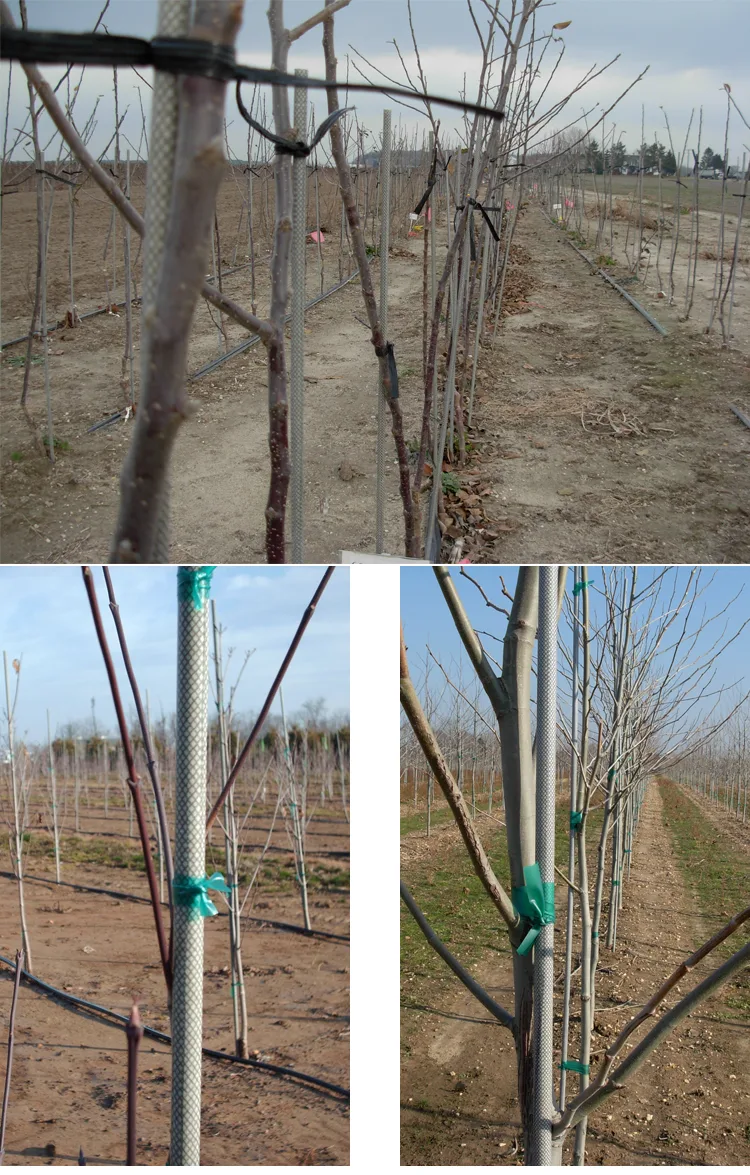Introduction
Tree staking is an essential practice for ensuring the healthy growth and stability of young trees. When a tree is newly planted, its roots are not yet firmly established in the soil, making it vulnerable to strong winds, heavy rainfall, or even the weight of its own foliage. Proper staking can help prevent these issues, ensuring that the tree grows straight and strong. However, the material used for staking plays a crucial role in the process. Fiberglass tree stakes have emerged as a superior choice for gardeners and landscapers alike. Known for their durability, strength, and environmental benefits, fiberglass tree stakes are increasingly becoming the go-to option for anyone looking to secure their young trees effectively.

fiberglass tree stake
The Importance of Proper Tree Staking
When planting a young tree, one of the most important considerations is how to support it as it establishes itself in its new environment. Staking provides the necessary support to prevent the tree from toppling over or growing crookedly. Without proper staking, a tree might suffer from root instability, leading to stunted growth or even death.
Staking is particularly crucial in areas with strong winds or loose soil, where the tree is more prone to movement. By anchoring the tree securely, stakes help the roots grow deeper and stronger, which is essential for the tree’s long-term health. However, it’s not just about staking the tree; it’s about doing it correctly. Incorrect staking can lead to girdling, where the tree’s trunk is constricted by the ties, or it can encourage dependence on the stake, weakening the tree’s natural growth.
Benefits of Using Fiberglass Tree Stakes
Fiberglass tree stakes offer several advantages over traditional staking materials like wood or metal. First and foremost is their durability. Unlike wooden stakes, which can rot, or metal stakes, which can rust, fiberglass stakes are resistant to weathering. This resistance ensures that they can support the tree for as long as needed, without the need for frequent replacements.
In addition to their durability, fiberglass stakes are incredibly strong yet lightweight. This combination makes them easy to handle and install, even in challenging conditions. Despite their light weight, they provide robust support, capable of withstanding the elements and the natural growth of the tree.
Another significant advantage of fiberglass tree stakes is their environmental impact. These stakes are reusable and do not contribute to deforestation, unlike wooden stakes. Additionally, they do not leach chemicals into the soil, making them a safer option for your garden’s ecosystem.
Fiberglass stakes are also resistant to pests. Wooden stakes are often targets for insects and other pests, which can weaken them over time. Fiberglass, on the other hand, does not attract pests, ensuring that your stakes remain strong and reliable throughout the tree’s growth period.
How to Stake a Tree Using Fiberglass Stakes
Staking a tree with fiberglass stakes is a straightforward process, but it’s essential to follow the correct steps to ensure the tree’s health and stability.
- Identify the Need for Staking: Not all trees need to be staked. Determine if your tree requires staking by assessing its size, the soil condition, and the local weather patterns.
- Positioning the Stakes: Place the stakes in the ground about 18 inches away from the tree trunk. The stakes should be placed on opposite sides of the tree to provide balanced support.
- Securing the Tree: Use soft, flexible ties to attach the tree to the stakes. The ties should be loose enough to allow some movement, which encourages the tree to develop a strong trunk.
- Monitoring and Adjusting: Regularly check the stakes and ties to ensure they are not causing damage to the tree. As the tree grows, adjust the ties to prevent girdling.
- Removing the Stakes: Once the tree is stable and its roots are well-established, usually after one to two years, the stakes should be removed to allow the tree to grow independently.
Comparing Fiberglass Tree Stakes to Other Materials
When choosing tree stakes, it’s essential to consider the various materials available. Wooden stakes, while traditional, are prone to rot and pest infestation. They may need to be replaced frequently, adding to long-term costs. Metal stakes are strong but can rust over time and are heavier, making them harder to work with.
Plastic stakes, while lightweight and resistant to rot, often lack the strength needed to support larger trees and can become brittle over time. In contrast, fiberglass stakes offer a perfect balance of strength, durability, and ease of use, making them a superior choice for tree staking. They may have a higher upfront cost compared to wooden or plastic stakes, but their longevity and effectiveness make them a more cost-efficient option in the long run.
Conclusion
Fiberglass tree stakes are the ideal solution for anyone looking to provide stable, long-lasting support for their young trees. Their combination of durability, environmental friendliness, and ease of use makes them a superior choice compared to traditional staking materials. By choosing fiberglass stakes, you’re investing in the health and stability of your trees, ensuring they grow strong and resilient. Whether you’re a professional landscaper or a home gardener, consider making the switch to fiberglass tree stakes for your next planting project. Your trees will thank you for it!




























